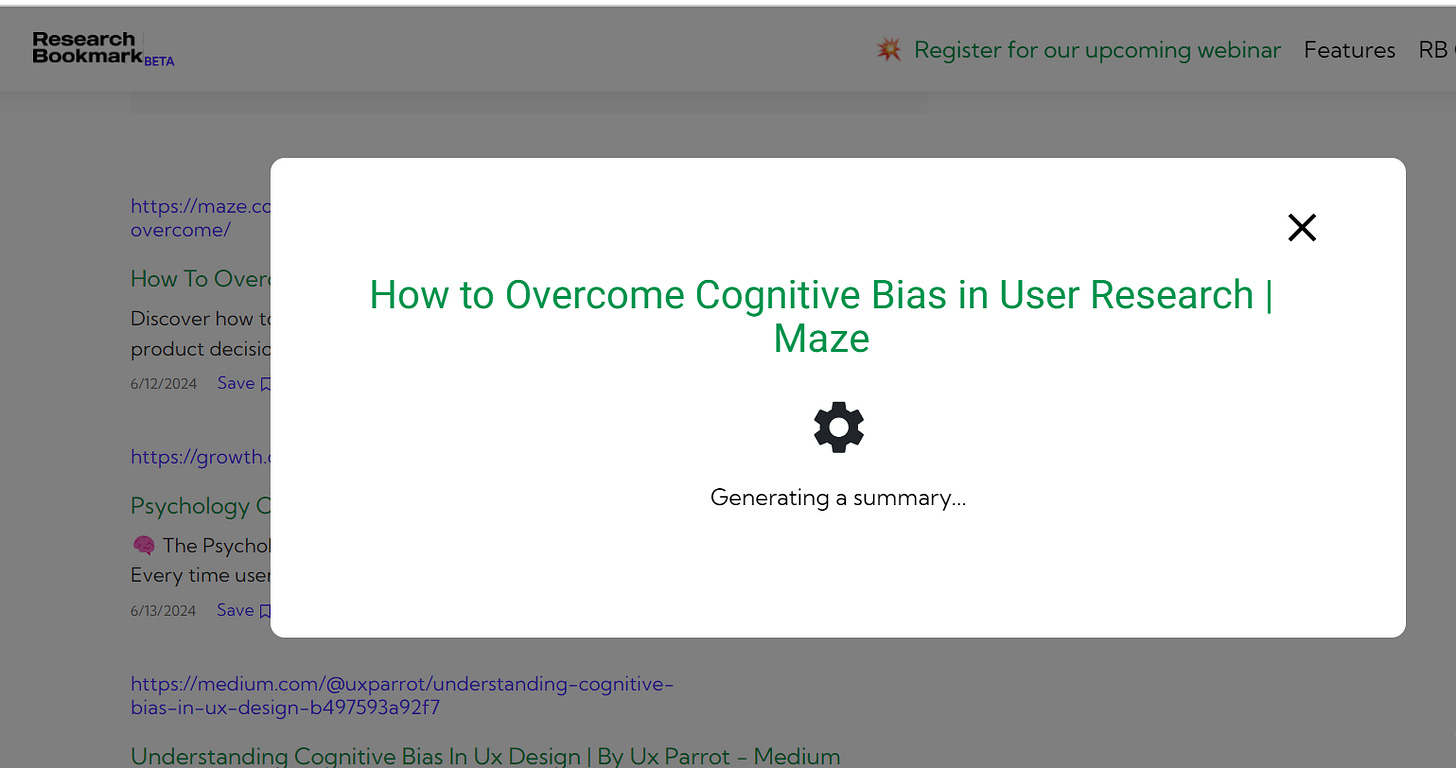Decoding User Behavior: Leveraging Cognitive Biases
A practical guide to decoding user behavior
Have you ever wondered why users behave the way they do on websites or apps? Understanding their hidden motivations is like having a UX superpower. The secret lies in cognitive biases – those mental shortcuts our brains take to make decisions faster. Let's unravel these biases and see how you can use them to create amazing user experiences.
What Are Cognitive Biases?
Think of cognitive biases as little quirks in our thinking. They're not always logical, but they're totally normal. These shortcuts help us process information quickly, but they can also lead us to make predictable mistakes. In UX, we can leverage these biases to guide users toward the actions we want them to take.
Essential Cognitive Biases for UX Design
The Bandwagon Effect (Social Proof): People tend to follow the crowd. If they see others using or liking something, they're more likely to do the same.
Hack: Use testimonials, reviews, user ratings, or phrases like "Most Popular" to tap into this bias.
Anchoring Bias: We rely heavily on the first piece of information we see. It sets a reference point for everything else.
Hack: If you want users to perceive a price as a good deal, show them a higher price first (e.g., "Was $5,000, Now $3,000").
Loss Aversion: We hate losing more than we love winning.
Hack: Frame offers in terms of what users could miss out on (e.g., "Limited Time Offer – Don't Miss Out!").
Choice Overload: Too many choices can be paralyzing.
Hack: Simplify options and present curated selections to make it easier for users to decide.
Scarcity Bias: Things seem more valuable when they're rare or hard to get.
Hack: Use phrases like "Limited Edition" or show low stock levels to create a sense of urgency.
Reciprocity: We feel obligated to return favors.
Hack: Offer a free trial, useful content, or a small gift to encourage users to reciprocate by signing up or making a purchase.
Confirmation Bias: We seek information that confirms our existing beliefs.
Hack: Present information in a way that aligns with users' expectations or values.
Putting It All Together
Research Your Users: Get to know your target audience and understand their biases.
Start Small: Don't try to use every bias at once. Experiment with one or two and see how they impact user behavior.
Test and Iterate: Measure the results of your UX tweaks. What works? What doesn't? Refine your designs based on real data.
Ethical Considerations
While cognitive biases can be powerful tools, use them ethically. Don't manipulate users into making decisions they'll regret. Focus on guiding them toward choices that genuinely benefit them.
Let's Get Practical!
Think of a website or app you use regularly. It could be anything from an online store to a social media platform. Now, put on your UX detective hat and try to identify the cognitive biases at play. Here are a few examples to get you started:
Example: Netflix (Streaming Service)
Scarcity Bias: You're browsing for a movie to watch, and you see a label that says "Leaving Netflix Soon!" Suddenly, that movie seems more appealing, and you're more likely to prioritize watching it.
Social Proof: Netflix displays user ratings and recommendations alongside content. Seeing that other people have enjoyed a show or movie makes you more likely to give it a try.
Anchoring Bias: You're considering signing up for Netflix. They offer a free trial period for a set amount of time (e.g., 30 days). This sets an anchor for your perception of value, making the paid subscription seem less expensive after the trial ends.
How could Netflix use these biases more effectively?
Scarcity Bias: Instead of just a generic "Leaving Soon" label, Netflix could introduce a countdown timer that shows exactly how many days or hours a particular movie or show will be available.
Social Proof: Netflix could personalize recommendations by taking into account your viewing habits and preferences of your friends or contacts on the platform.
Anchoring Bias: Netflix could offer tiered subscription plans with different features at varying price points. This creates a price anchor, making the middle-tier option seem like the most attractive choice.
Your Turn!
Now, it's your turn to analyze a website or app you use frequently. Here are some questions to guide your investigation:
Which cognitive biases can you identify? Look for elements that trigger emotions, create urgency, or influence your perception of value.
Are these biases being used effectively? Do they guide you towards actions that benefit both you and the company? Or do they feel manipulative?
How could the design be improved? How could the biases be used more subtly or strategically to enhance the user experience?
Remember: The goal isn't to trick users, but to understand their motivations and create designs that meet their needs in a way that feels natural and intuitive. By leveraging cognitive biases in an ethical and thoughtful way, you can create user experiences that are both engaging and effective.
Regards,
The RB Team




